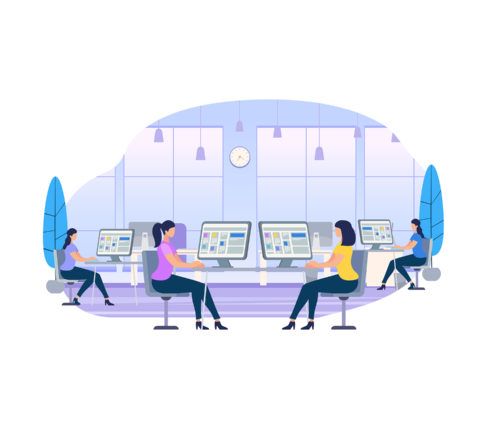Change Management Tenets for Return-to-Office Scenarios
The impact of COVID-19 on the population cannot be understated, given the considerable changes we have made in our day-to-day lives. The outbreak has been stressful to say the least, as people attempt to manage work and family life from home. Any potential fear and anxiety can also cause strong emotions with varying reactions to stressful situations.
At a time when companies are considering how to open their doors to employees, project managers can help teammates and leaders prepare through effective change management. Let's explore how the key tenets of change management in a technology project can apply to the return-to-work scenario.

Start with a strategy
An effective change management strategy for an organization during this pandemic is critical as states slowly start to open. The complexity involved with the course of action requires us to take a look at this critical issue as a cross-functional project that needs to be properly planned and executed.
As a project manager, I first ensure there are proper channels in place so project plans, and changes to them, are effectively communicated to the relevant parties. Risks and risk mitigation must also be explored from the get-go. And with any technology project, communication will play a critical role as the mitigation plans are reviewed and subsequent changes are made to them as situations change.
Why is communication important?
Once the strategy is in place, there should be consensus across the organization leadership on the plan to make sure employees don’t assume or fill in gaps.
Communication with employees is key here. If workers assume or fill in the gaps, rumors can begin spreading mis-information across the organization. This, in turn, can lead to more anxiety and fear rather than the plan being used to actually mitigate it. If you are waiting to send out communication to employees, then you should also communicate how and when this will happen. If the employee keeps waiting without hearing anything, the anxiety may grow further. This makes any change management that much more difficult to execute.
Another important aspect is aligning with your workers at the ground level and receiving feedback on the plans and strategy in place. Employees know best how to perform their job, so how proposed changes could possibly impact their ability to do their job is critical for proper change management. The feedback mechanism also provides a way for employees to be socially responsible and recognized as an important part of the organization. Again, communication is key to building respect amongst employees and each other's choices as they move forward.
What are some of the risks associated with workers returning to work?
Part of the change management process for technology projects is to identify risks. In this scenario, here are a few risks that your organization may identify for your own employees:
- employees getting infected with the coronavirus
- fear and anxiety impacting employees' work
- possible underperformance
- peer pressure from colleagues for how one should act while in the office (for example, how would a co-worker react if you had a mask on while having a conversation with them? How comfortable would you be in a conference room sitting with others in a closed space?)
- any possible legal risks associated with colleagues testing positive
How do we mitigate some of these risks?
As a note, this article is not meant to be an all-encompassing guide or attempt to advise organizations on what is the right course for their particular situation. However, as experts in change management, we can help explore the risks and possible mitigations for leaders at this time. It should be a goal to accommodate and ensure employees are comfortable in their work environment - whether at home or in the office.
Here's just a few ways to mitigate some of the risks we identified above:
- make confidential mental health assistance available for employees
- develop specific policies for managing high-risk individuals (per CDC, this refers to an older population and those with underlying medical conditions)
- accommodate or set policies in place for employees who do not return to the office and how to handle this type of situation (including any legal obligations or considerations)
- allow employees to wear masks, use hand sanitizer, and social distance

We recognize that the office will look much different than what it was at the beginning of the year. We also know not all offices are the same. But as you consider other ways you may need to change behavior in the office, consider:
- Meetings: Limit how many people are in a conference room based on size and seating to allow for social distancing
- Traffic flow: For narrow hallways, when one can’t be socially distant, consider setting up one-way traffic flow (similar to those in grocery stores)
- Desk space: Allow for enough spacing between employees and/or barriers in small spaces
- Break room/kitchens: Limit number of people based on size of the room and seating, stagger lunch schedules, or encourage employees to eat at their desks
- Training: Hold an all-hands meeting before coming into the office to communicate properly on expectations for the worker and being respectful of their co-workers' choices; allow time for questions as this is a major change for everyone involved
- Reminders: Post key COVID-19 facts and reminders around the office for employees to re-affirm expectations
- Follow-ups: Continue frequent organization-wide meetings so employees can offer feedback and discuss issues
No matter what risks your organization faces or how you choose to address them, organizations must have a game plan in place. It may take time to return to "normal," but helping to ease your employees through the transition and being patient will minimize disruption to productivity – and maximize the overall happiness of your employees.



